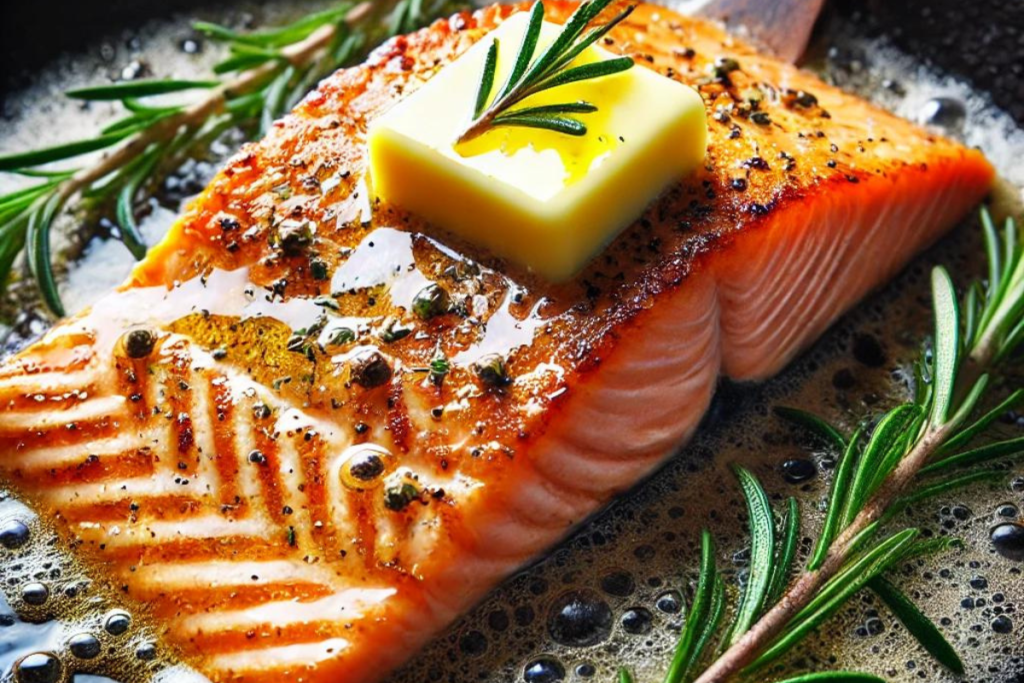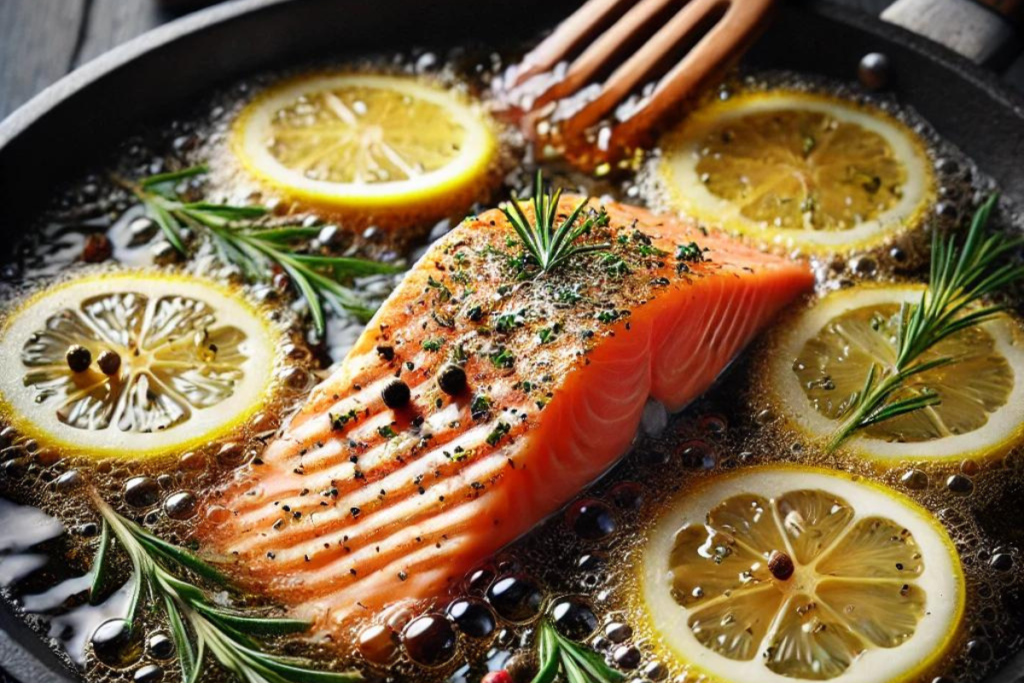When it comes to cooking salmon, the choice between butter and oil for frying can make a significant difference in both flavor and texture. Both ingredients have unique qualities, and choosing the right one depends on your culinary goals. In this article, we’ll compare frying salmon in butter and oil and explore the best techniques for getting the most out of your dish.
Butter vs. Oil: Which is Better?

Butter
Butter adds a rich, creamy flavor to salmon that’s hard to beat. It creates a golden-brown crust, giving the fish a slightly crisp exterior while keeping the inside tender and moist. However, butter has a relatively low smoke point (around 350°F or 175°C), meaning it can burn if not used carefully.
- Flavor: Adds depth and richness.
- Texture: Creates a golden crust.
- Smoke point: Low, making it prone to burning at higher temperatures.
If you’re looking to avoid burning, you might consider using clarified butter, which has a higher smoke point while still providing that rich flavor.
For more insights on getting a perfect crispy crust, check out this guide on crispy pan-fried salmon.

Oil
Oil has the advantage of a higher smoke point, allowing you to cook at higher temperatures without risking a burnt taste. Oils like olive oil, avocado oil, and canola oil are great for frying, as they maintain a neutral or subtle flavor, which lets the natural taste of salmon shine through.
- Health benefits: Certain oils like olive and avocado oil contain healthy fats.
- Higher smoke point: Ideal for higher-temperature frying.
- Flavor: More neutral, allowing the salmon’s taste to dominate.
Explore this step-by-step guide on pan-frying salmon to perfect your oil-based frying technique.
Combining Butter and Oil for the Best Results

For those who can’t choose between the flavor of butter and the heat resilience of oil, many chefs recommend combining both. This method offers the best of both worlds: the rich flavor of butter and the heat stability of oil.
How to Combine Butter and Oil:
- Start with oil: Heat a small amount of oil in your pan to a high temperature.
- Add butter: Once the oil is hot, add butter and allow it to melt.
- Fry the salmon: Place the salmon in the pan, skin-side down, and cook until it’s golden and crispy.
This technique allows you to create a delicious, crispy crust without burning the butter.
Frying Techniques for Butter and Oil
Cooking with Butter
If you prefer the flavor of butter, here are some tips to make the most of it:
- Preheat the pan over medium heat.
- Add butter and allow it to melt until foamy.
- Place the salmon in the pan, skin-side down, and cook for about 3-4 minutes.
- Flip the salmon and continue cooking until the salmon is golden and cooked through.
Cooking with Oil
Frying with oil gives you more flexibility in terms of heat control. Here’s a basic method:
- Heat your pan with oil until it shimmers.
- Place the salmon skin-side down, and cook for 4-5 minutes until crispy.
- Flip the salmon and cook for an additional 4-5 minutes until fully cooked.
If you’re interested in more ways to enhance your frying technique, you might also like to explore fried salmon bites for a flavorful twist.
Internal Linking Opportunities
To further enhance the content and keep readers engaged, consider linking to relevant internal articles on Samuel’s Recipes:
- Link to the crispy skin salmon recipe with salsa verde to guide readers on how to pair their pan-fried salmon with fresh, flavorful sides.
- Include a reference to fried salmon bites for those interested in bite-sized options.
- Mention the salmon fries as a fun, alternative way to enjoy salmon.
FAQs About Frying Salmon
What is the best oil to fry salmon in?
Oils like olive oil, avocado oil, and canola oil are great choices for frying salmon due to their high smoke points and health benefits.
Can you fry salmon in butter without burning it?
Yes, by controlling the heat or using clarified butter, you can prevent burning while still getting that delicious flavor.
Is olive oil better than butter for frying salmon?
Olive oil is healthier and has a higher smoke point, but butter adds more flavor and helps create a crispy crust.
Butter or Oil for Frying Salmon?
In the end, the choice between frying salmon in butter or oil depends on your priorities. For those who prioritize flavor and a rich texture, butter may be the best option. On the other hand, if you’re looking for a healthier, high-heat method, oil could be the way to go. If you want the best of both worlds, combining the two is an excellent approach to get a crispy, flavorful result.
No matter which method you choose, mastering these frying techniques will ensure that your salmon is cooked to perfection every time. For more inspiration on how to prepare delicious salmon dishes, explore our guide on crispy skin salmon for extra flavor ideas!
